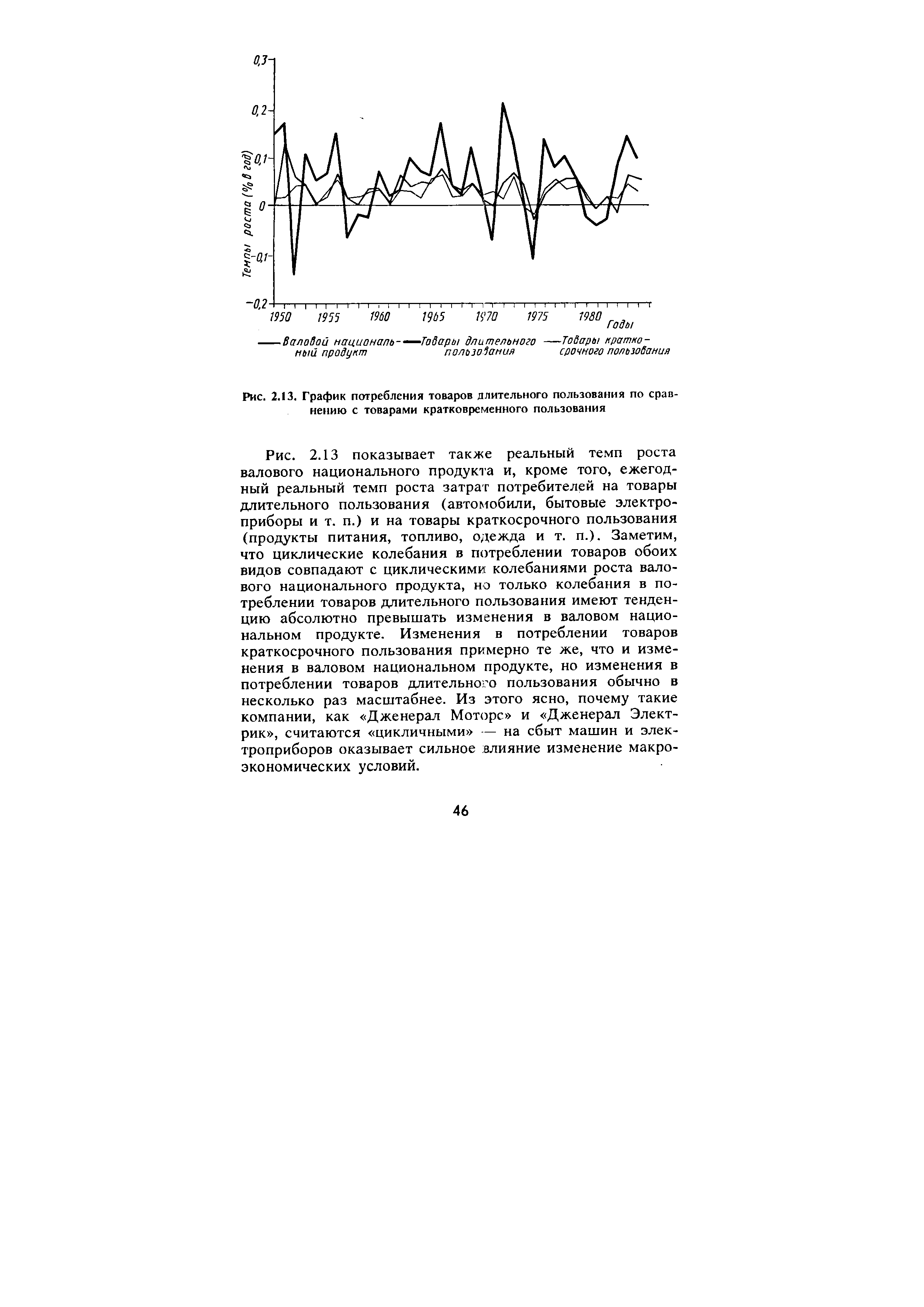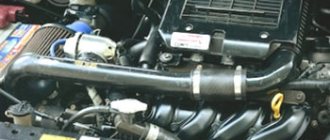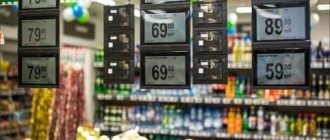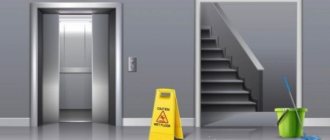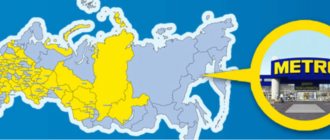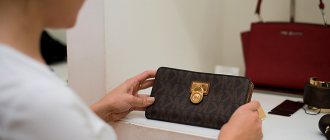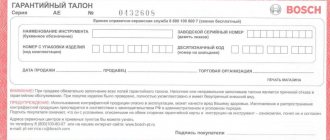What goods are considered durable goods?
According to the Law “On the Protection of Consumer Rights,” durable goods are those items and products that can be used for more than three years and until they stop functioning altogether.
A more detailed definition of durable goods is provided below:
- The manufacturer of durable goods must establish the service life of the product/product during which he can guarantee its absolute functioning and intended use. If a product breaks before the end of its service life, the manufacturer must take responsibility for eliminating the defect;
- If a product may over time begin to pose a danger to the life and health of its owner, the manufacturer must reduce its service life so much that the product does not pose any danger during the specified service life;
- The service life of durable goods can be measured not only in months and years, but also in the number of active use or number of service cycles;
- When producing a durable product, the manufacturer must take care of producing the necessary parts for the product, which may fail or break during its service life. At the same time, the production period of these parts should not be less than the service life of the product for durable use;
Information
By satisfying the above requests when establishing the service life of durable goods, their manufacturer ensures that the consumer uses his legal right to use the product for an extended period of time.
Replacement object for long-term use
In most cases, products that can be used for a long period of time are considered technically complex, and as a result, they are subject to handling rules for purchases of this kind.
- Returns of technically complex purchases are possible only if defects of a design, manufacturing, technological or other nature are identified.
- A disadvantage may be a discrepancy between the characteristics of the product itself and the software (if any), as well as the presence of characteristics that do not suit the buyer and are not specified by the seller and in the scope of the accompanying documentation.
- The return of an object, the inadequate quality of which is determined as a disadvantage for the individual consumer or lack of awareness, can be returned within two weeks after its sale. At the same time, the safety of packaging, labels, tags, protective coatings and accompanying documentation must be ensured (the product must be like new so that it can be sold again), otherwise the exchange will not be made.
- A refund or exchange of durable goods is possible after performing diagnostics and repairs and establishing the absence or presence of significant deficiencies, defined as follows: - If it is not possible to restore the object to its original condition by replacing defective components and ensuring its stable operation; — If the malfunction, after its restoration, occurs again for a similar reason; — If the cost of work to restore the working condition is too high, and the time for repair exceeds acceptable limits.
- After successful repair and restoration of the purchase to proper condition, the user continues to use it. The warranty period must be extended for the duration of the repair, about which appropriate notes are made in the passport or repair form.
- If, as a result of repairs, a significant defect is revealed, the item for continued use is subject to replacement or a refund. When replacing, the consumer has the right to: - Request a similar model or make a choice in favor of another manufacturer, while the difference in the costs of the objects must be recalculated and compensated by one of the parties; — Demand a reduction in the purchase price if the nature of the defect allows further use of the purchase, but its quality requires a markdown; — Demand a refund of the purchase price in monetary terms with recalculation of the cost on the day of payment, taking into account rising consumer prices and inflation.
This is interesting: Size of birth certificate
A long period of use is associated with a certain risk - if after several years the production of the product and its components is discontinued, there may be a breakdown and a lack of parts for repair or replacement. It is legally established that it is necessary to maintain the production of goods necessary for repairs during the expiration date or ten years (if the expiration date is not established by the manufacturer), but the practical implementation of this requirement may be difficult. This situation becomes especially relevant when purchasing imported goods, when the collapse of the importer’s company or sanctions may cut off the supply of spare parts.
List of goods
To understand which goods and products are considered durable goods, please review the list of goods below:
- Motorized transport (motorcycles, mopeds), cars, boats, tourist water transport;
Durable vehicles do not include mobile devices for incapacitated citizens (disabled people).
Passenger vehicles are vehicles whose purpose is to travel on the road. This category does not include vehicles with two and three wheels, as well as small vehicles with four wheels.
Motorized transport means a vehicle with two wheels, weighing no more than four hundred kilograms.
Water transport is considered to be a sea vessel (with or without a sail, with or without a motor), the purpose of which is to transport passengers of different categories (athletes, tourists, etc.).
All listed vehicles can be used for an extended period of time.
- Furniture items;
These include a variety of items with which a person furnishes his home. The purpose of furniture is to store various human property (clothing, dishes, documents, money, etc.) and use it as a means of sitting (chairs, armchairs), lying (beds, sofas), etc. Can be used for an extended period of time.
- Electrical appliances , the purpose of which is to use them for personal hygiene and medical care. These include: electric razors, electric hair straighteners, hair dryers, electric reflectors, electric bandages, blankets, heating pads;
- Electrical appliances for household purposes: electric stoves, kettles, boilers, sandwich makers, microwave ovens, toasters;
- Weapons equipment (firearms);
Items not eligible for replacement
The “Consumer Rights Protection Law” provides for a guarantee of repair of a product under warranty at the expense of the seller, and upon written request from the consumer, he must be provided with a similar product for the entire duration of the repair. The replacement product must be delivered by the seller to the consumer's address within three days from the date of submission of the relevant application.
The possibility of issuing a replacement is regulated by clause 2 of Article 20 of the “Law on the Protection of Consumer Rights,” which limits the consumer’s right to a replacement to the relevant list approved by Decree of the Government of the Russian Federation No. 55. The list of durable goods that are not subject to temporary issue by the seller for the period of repair or replacement as amended by Resolution No. 55 of 01/05/2015 looks like this:
- Wheeled vehicles with two or more wheels, intended for movement on roads without laying rails, the energy for movement of which is generated by a person or through an internal combustion engine, as well as trailers and standardized units having an identification number. An exception is made if the vehicle is driven by a disabled person.
- Vessels for navigation on rivers and lakes, the length of which does not exceed 25 meters, with a capacity of up to 12 passengers, used for walking on the water surface of reservoirs and leisure activities for the population.
- A set of products intended for furnishing places where people stay at home and in public places. Products can be moved and rearranged or built into the interior.
- Devices for use at home, as toiletries and as medical devices connected to the electrical network: - Electromechanical shaving devices; — Electric devices for drying hair using a stream of heated air; — Electric heating devices in the form of hair curling irons; — Medical heaters with a reflector or mirror; — Electric heating device for local body heating; — Flexible bandages with an electrochemical element; — Low-temperature heaters used for local heating or heat therapy; — Electromechanical devices for oral care; — Electric hair curlers; — Electromechanical devices for cutting hair; This also includes devices not specifically specified in the text of Resolution No. 55 that come into contact with the skin and mucous membranes of the human body.
- Electrical appliances intended for home use for the purpose of processing food at high temperatures or for preparing food: - Household ovens, using microwaves to heat food; — Ovens with electric heating elements for the hob and oven; — Devices for making toast; — Electric heating devices for boiling water; — Electric heating devices for heating and boiling water in an insulated container; — Electrical devices for heating food. This also includes kitchen appliances for cooking and heat treatment that are not specifically specified in the text of Resolution No. 55.
- Weapons intended for individual civilian use, classified as follows: - Personal defense means are small arms and various devices, the use of which for self-defense is permitted by the requirements of legislative acts. They are divided into: - Guns with a barrel length of 0.5 to 0.8 m, without cutting the internal surface, capable of using traumatic cartridges as ammunition; — Guns without a barrel, fired from the magazine compartment at a distance close to the attacker. Production in the Russian Federation is mandatory. — These are tools or devices that strike an attacker through tear-producing or chemical-irritating effects on receptors; — Devices for damaging the body of an attacker through shock or discharge of high voltage electric current; - Hunting tools for shooting animals and birds, for systematic hunting or leisure, having a number of distinctive features: - Characteristics of the inner surface of the barrel in terms of the presence and length of rifling; — Number of trunks; — The need to reload after each shot; — The number of charges for a simultaneous shot. — Sports weapons – weapons that have a clear sporting purpose; — Signal weapons - designed to provide visual signals, including light, sound and smoke signaling methods.
- Components, parts and elements of weapons used as civilian or combat weapons, as well as cartridges, cartridges and other elements of equipment.
In addition to the above list, Resolution No. 55 includes a list of goods that cannot be replaced within 14 days after the date of purchase, provided they are of proper quality. This list also includes products with a long period of use.
Why can’t a product be used after its service life has expired?
Many of us, when purchasing a product, use it to the last. However, this is not always correct. By using a product longer than its intended service life, the consumer risks creating a danger to his health and the health of his loved ones.
Information
When purchasing a product, you should pay attention to its service life and, subsequently, adhere to it. If the service life of the product is exceeded, a threat to the life and health of the consumer may arise, for which he himself, and not the manufacturer of the product, will bear responsibility.
According to Decree of the Government of the Russian Federation No. 720, you should not exceed the established service life of the following list of goods:
- Children's products (toys, strollers, game consoles, etc.)
- Medical home equipment;
- Equipment intended for heating the premises (water heaters, home stoves, fireplaces, etc.);
- Furniture (armchairs, chairs, ottomans, beds, sofas, sets, wardrobes, chests of drawers);
- Household goods (electric saws, drills, water filters, gas appliances, food containers, refrigerators;
- Electrical equipment for household purposes (TVs, computers, game consoles, musical instruments);
- Sports goods (treadmills, step machines, exercise bikes, etc.);
- Goods for swimming (jet skis, boats, etc.);
- Pet care products;
- Products for caring for a summer cottage (motor hoes, motor rippers, etc.);
What could pose a threat?
If, due to the structural properties or properties of the materials from which the object or its part is made, in the form of a separate part, assembly or assembly, the product may, over time, pose a threat to the life, health and safety of people, their property or the environment, its service life should be limited.
Limitations on the service life of such objects are determined by the period of time after which a dangerous property of a consumer product may manifest itself.
Legislatively, Government Resolution No. 720 defines a list of durable goods that are potential sources of danger, for which a service life must be established, after which the object must be processed and disposed of.
The list as amended by Resolution No. 720 of May 10, 2001 includes:
- Children's consumer products: - Toys; — Strollers of various designs and children’s bicycles, as well as spare parts and components for them; — Gaming computer programs; — Personal electronic computers intended for use by children in domestic conditions.
- Medical products for the treatment and prevention of diseases in the home: - Technical devices that are used in providing care to patients; — Special durable devices for diagnosing the body; — Devices for providing a targeted effect on a person, replacing individual functional parts of the body, and also as a drive for instruments for mechanical medical effects; — Optical parts and devices for vision correction.
- Heating and plumbing equipment, instruments and equipment: - Apparatuses intended for heating; — Boilers designed to produce heating agents (steam, water); — Equipment for heating water or hot water columns; — Plumbing equipment of various material designs (metal, polymers, earthenware, semi-porcelain, porcelain); — Fittings and fittings for sanitary and technical applications.
- Furniture items: - Furniture products for seating several people with a backrest; — Single-seat furniture products for being in a reclining position; — Wide furniture products for seating several people without a backrest or with one backrest at the head; — Pieces of furniture that transform from a single seat to a single sleeping place; — Pieces of furniture that transform from items for seating several people into a multi-person sleeping place; — Soft beds with a rigid frame or frameless; — Furniture products for storing items with various purposes; — Sets of furniture or furniture products.
- Household goods: - Products for household use, powered by an electrical network; — Equipment for processing metal and wood blanks at home; — Treatment equipment for water disinfection and purification of varying degrees; — Units for moving and pressurizing liquids and gases for domestic use; — Gas household equipment, including those running on liquid fuel and solid fuel; — Containers for storing and carrying/transporting food products.
- Objects to satisfy human cultural needs: - Radio-electronic equipment for domestic use; — Computers and copying equipment for household use; - Musical instruments.
- Products intended for sports.
- Vessels and watercraft for recreation on the water, spare parts, parts and assemblies for them.
- Accessories for keeping fish, birds and animals at home.
- Means of manual labor mechanization for gardening, including various motor cultivators, motor cultivators, mini tractors, etc.
This is interesting: Cassation appeal in civil proceedings
What are investment goods
The concept of investment goods is one of the fundamental ones in macroeconomics.
It should be understood in an almost literal sense - these are goods that are purchased through financial investments and used by the enterprise to produce other goods and services. They are also used to expand production, increase its volumes, increase capacity and modernize. All investment goods within one country together form its production capacity. The same applies to a single plant or holding, for example. This category includes:
- Buildings necessary for organizing the process of manufacturing any product - workshops, railway stations, etc.;
- Ways of communication between various production facilities and warehouses and places of sale of goods - highways, highways, railways, waterways. Also, for some sectors of the economy, the presence of gas pipelines is important, the construction of which is also carried out with invested funds;
- Mechanisms and equipment on which the process of processing and manufacturing of products will actually take place;
- Office buildings and buildings of a state nature, which are needed not for production, but for the sale of goods, and, therefore, to obtain funds to continue production.
TITLE LIST - a list of construction projects approved in the established manner, mandatory for the customer, contractor, planning, financial and supply authorities.
T.s. compiled for the entire construction period and includes the name and location of the construction site, subordination and industry affiliation of the construction site, the nature of the construction, where and when the design and estimate documentation was approved, the contractor organization, assignments for capital investments, commissioning of facilities, etc. based on T. s. Every year, for each construction project, a so-called intra-construction technical statement is drawn up, which specifies issues of the volume of work, the procedure for using allocated funds, etc. in the corresponding year. PRODUCT - everything that can satisfy a need (demand) and is offered to the market in order to attract attention, acquisition, use or consumption. There are T. of durable use, short-term use, special demand, passive demand, everyday demand, and G. of preliminary choice. A GIFFEN GOODS is an inferior good that occupies a significant place in the consumer’s budget and has a demand curve with a positive slope. For a Giffen good, the income effect from a price change is outweighed by the substitution effect. [p.206] The impact of cycles on the production of durable and non-durable goods [p.160] Economic goods are classified taking into account a number of criteria. Thus, a distinction is made between consumer and investment goods. The former satisfy needs directly, while industrial goods are needed for use in the creation of other goods. For example, food is a consumer good, while industrial equipment and agricultural machinery are capital goods. In the time aspect, durable and non-durable goods are distinguished. While durable goods can be used more than once, non-durable goods can usually be used once. For example, refrigerators, televisions, and industrial equipment are durable consumer goods, while food, raw materials, and fuel are nondurable consumer goods. [p.53]
There is another classification of goods that complements the previously given one. There are durable and non-durable goods, special, passive and everyday goods, as well as pre-selection goods. [p.297]
To increase the likelihood of introducing your own products on the market, similar products presented on the market are assessed according to the level of competitiveness of the product, i.e. the product is positioned on the market, which involves a set of actions to ensure the competitiveness of the product and the development of an appropriate set of marketing measures (enlarged list includes by product - ensuring the competitiveness and legal protection of new and modified goods introduced to the market, classification of products into durable and non-durable goods, special demand, passive and everyday demand, preliminary selection for setting prices - the cost plus profit valuation method). [p.31]
The elasticity of demand from the total income of consumers is also different for short-term and long-term periods. According to the observations of American economists, for most goods and services (food, drinks, fuel, entertainment, etc.), the elasticity of demand with income and, therefore, the associated changes in risk are greater in the long run. For durable goods, short-term income elasticities and risk fluctuations will be much larger than long-term elasticities, and the changes in risk associated with the latter will be relatively smaller. [p.51]
TYPES OF GOODS - classification of goods, products by type of buyer and by route of delivery of goods to him. There are two main types: consumer and industrial goods. Consumer goods include durable and nondurable goods, as well as services. Based on the purchasing method, they are divided into convenience goods, pre-selection goods and high-demand goods. Industrial goods consist of fixed and working capital (consumable goods). [p.751]
Durable and non-durable goods, services. [p.64]
TYPES OF GOODS - a term denoting the classification of products according to the type of buyer and according to the routes of delivery of the goods to him. There are two main types: consumer and industrial goods. Consumer goods include durable and nondurable goods, as well as services. Based on the purchasing method, they are divided into convenience goods, pre-selection goods and high-demand goods. Durable goods are goods and products used by consumers for several months or years, for example a TV, refrigerator, car. Non-durable goods are consumer goods with a useful life of up to one year or wholly consumed in one or more cycles. Basic necessities are the most necessary and frequently used things, objects, goods; the economic numerical criterion for classifying consumer goods into the group of essential necessities is the elasticity of demand for them by income, which should be less than one, since with increasing income people tend to purchase items not first necessities, but rather rarer goods. Luxury items are items that you can do without in life, goods of exquisite taste, affordable only to wealthy people and families. Increased rates of customs duties are sometimes imposed on such imported goods. Passive demand goods are goods that the consumer does not know about at all, or even knows about, but has not yet thought about purchasing. Everyday goods are goods that are regularly and often used for personal and family consumption. Well-known products are products that are purchased without first collecting information about them because they have well-known qualities and a high image. For example, Mercedes cars, Panasonic TVs, etc. Pre-selection goods are goods that are purchased after evaluating the assortment, comparing them with analogues in terms of quality and price, taking into account information about the manufacturer, as well as based on real experience in using these or similar goods; these usually include durable goods. An inferior good is a good for which demand falls as the quantity of that good increases and shifts toward goods of higher quality. As consumer incomes grow, these goods are gradually being forced out of consumption and replaced by higher quality goods. Complementary goods are goods, the use of one of which requires the simultaneous use of another product that complements the first. For example, a complementary product to toothpaste is a toothbrush, and a complementary product to a toothbrush is a case for it. When the demand for one of these goods changes, the demand for the other changes in a similar way. [p.141]
Most of the income (about 75%) comes in the form of personal consumption expenses. These are 1) expenses for durable and non-durable goods 2) expenses for services. Spending on durable goods and some types of services may be delayed. Such expenses are subject to greater fluctuations over a given period of time than expenses for non-durable items. [p.40]
On the other hand, for certain goods the exact opposite picture is typical - demand is more elastic for the short-term rather than the long-term period. These goods (cars, refrigerators, televisions or industrial equipment) are durable goods, and therefore the total stock of each good held by consumers is large compared to their annual production. As a result, a small change in the total inventory that consumers want to hold can lead to a large percentage change in the amount they purchase. Suppose, for example, that the price of a product rises by 10% and, as a result, the total stock that consumers want to hold decreases by 5%. Initially, this will cause a decrease in purchases by significantly more than 5%. But gradually, as the stock is used up (and worn parts are replaced), demand will increase again. Therefore, in the long run, the total stock of goods owned by consumers will be 5% less than before the price increase. [p.43]
For durable goods, the picture is the opposite. Let's take cars again as an example. If total income increases by 10%, the fleet of cars that consumers would like to own will also increase by, say, 5%. But this means a significant increase in current purchases (if the fleet is 70 million, a 5% increase equals 3.5 million, which is close to 50% of normal demand in some years). Eventually, consumers will build their desired fleet of cars, followed by an increase in purchases to replace older vehicles. The size of these new purchases will be larger than before because the larger the fleet, the greater the annual purchases. It is obvious that the short-term elasticity of demand from income will be much greater than the long-term one. [p.44]
Because demand for durable goods fluctuates so sharply in response to short-term changes in income, the industries that produce these goods are highly sensitive to changes in macroeconomic conditions. In particular, this concerns the business activity cycle [p.44]
| Rice. 2.13. Graph of consumption of durable goods versus non-durable goods |
|
I am convinced that the demand for capital is limited within narrow limits, in the sense that it would not be difficult to increase the mass of capital to such a volume that its marginal efficiency would fall to a very low level.
This does not mean that the use of capital assets would cost almost nothing; it means that the use of capital assets would generate income slightly exceeding the cost of their physical and moral wear and tear, plus a small premium for risk and reward for skill and independent decision-making. In short, the entire income generated by durable goods during their entire life, as well as by nondurable goods, would just cover the labor costs associated with their production, plus the premium for risk and the reward for skill and supervision. [p.161] Since the volume and structure of a country's total product depend on the volume and structure of consumer spending, it is necessary to study how households distribute their spending among a variety of goods and services that compete with each other for their money. Consumer spending can be broken down into several categories: 1) spending on durable goods 2) spending on non-durable goods 3) spending on services. [p.83]
If the expected service life of a product is three years or more, it is considered a durable good, but if this period is less than three years, then it is a non-durable good. Cars, VCRs, washing machines, personal computers and most furniture are durable goods. Most food and clothing items are non-durable goods. Services refer to the work performed by doctors, lawyers, hairdressers, mechanics, etc., for clients. As follows from the table. 5-1, the American economy is service-oriented, as more than half of consumer spending is directed to this area. [p.83]
The same thing happens with consumer durables. When a recession hits and the family budget has to be cut, plans for purchasing durable goods such as household appliances and cars are the first to fall apart. People do not buy new models, but prefer to repair old ones. The situation is different with food products and clothing, that is, non-durable consumer goods. The family needs to eat and clothe itself. The opportunity to postpone such purchases arises much less frequently. True, the level and quality of consumption of these goods will, of course, decrease to some extent, but not as much as what happens with durable goods. [p.160]
The power of monopolies. Most capital goods and consumer durables industries are highly concentrated, with a relatively small number of large firms dominating the market. Such firms have enough monopoly power to counteract price declines over time by limiting output in response to falling demand. Therefore, the decrease in demand affects mainly the level of production and employment. We see the opposite picture in industries producing non-durable goods. These industries are mostly quite competitive and characterized by low concentration. Firms operating here are unable to counteract the decline in prices, and the fall in demand leads to a decrease in the price level rather than to a reduction in production volume. [p.160]
During a recession, industries that produce capital goods and consumer durables typically suffer more from declines in output and employment than services and industries that produce consumer nondurables. [p.161]
All sectors of the economy are affected by the business cycle, but in different ways and to varying degrees. The cycle has a stronger impact on output and employment in capital goods and durable consumer goods industries than in service and nondurable goods industries. [p.178]
Key question. What are the major phases of the business cycle? How long do business cycles last? How do seasonal variations and long-term trends complicate the assessment of the cycle? Why does the business cycle have a greater impact on production and employment in durable goods industries than in nondurable goods industries? 180]
Services Actions aimed directly at the consumer (services in the world account for 50% of the volume of consumer goods, 15% of durable goods and 35% of non-durable goods) [p.575]
Based on durability, goods are divided into two groups: a) durable goods - things intended for repeated, long-term use, for example, furniture, clothing, vehicles b) non-durable goods - things consumed during one (food products) or several cycles consumption (soap, washing powder, etc.). [p.122]
Based on the degree of inherent durability or tangibility, goods can be divided into the following three groups 5 Durable goods are tangible products that usually withstand repeated use. Examples of such goods include refrigerators, machines, and clothing. Non-durable goods are material products that are completely consumed in one or several cycles of use. Examples of such products include beer, soap, and salt. [p.249]
For other goods, demand is more elastic for the short run than for the long run. These goods (cars, refrigerators, televisions or industrial equipment) are durable goods, and therefore the total stock of each good held by consumers is large compared to their annual production. [p.50]
The most general classification criterion is the materiality of goods, which allows us to distinguish two large classes in the structure of the entire commodity mass - material goods (or goods themselves) and goods-services (or simply services). Another general criterion should be called time, which allows us to divide all goods into two classes of durable and short-term use. And the third generalized criterion is the intended purpose of the goods. In accordance with this criterion, they are divided into consumer goods and industrial goods. Each of these classes is in turn subdivided into smaller subclasses (species and varieties) according to more specific criteria. Some of the classes (species) overlap. Let's consider the most significant of them. [p.267]
When forming a family budget, we know that a certain share of income must be set aside to purchase durable goods. When forming a state plan, directing a certain amount of funds to expand and modernize production is vital for the economy. This is the ABC of the reproduction process. A decrease in the share of the accumulation fund is a very limited and short-term reserve for consumption growth. The main thing here is to increase the volume of national income, part of which is the consumption fund. [p.149]
The implementation of countercyclical policies must also take into account the fact that the recession affects different sectors of the economy differently; investment sectors and industries producing durable consumer goods (especially construction) suffer the most, while industries producing non-durable consumer goods react less to the recession. This is due to the low elasticity of demand for these goods. But in the recovery phase, investment sectors receive maximum development. Thus, in a market economy, there are both cyclical and non-cyclical sectors. Due to the delay in the reaction of producers and the weak mobility of production capacities, the phase of growth in consumer spending and the phase of the level of business activity of businessmen stimulated by it cannot coincide in time. Therefore, in reality, consumers and producers are in different phases of the same cycle. In this sense, we should talk about two cycles occurring simultaneously in the economy, the convergence of which is the most important goal of economic policy. [p.64]
The CPI is calculated based on a set of goods and services approved back in 1982-1984, many of which have already been discontinued. The data used to calculate it does not always take into account short-term price declines in stores. The list of goods from the consumer basket is usually revised only once a decade. Thus, microwave ovens and VCRs appeared in it only 10 years after entering the market, when they became widespread and their prices dropped by about 80%. Such price declines during the product life cycle, especially typical for durable goods, are never reflected in the CPI. Despite the efforts of the Bureau of Labor Statistics (BLS) to take into account changes in the quality of goods, improvements in reliability, safety, and energy consumption are not always adequately reflected in the consumer price index. [p.501]
Main types of classification of goods. When choosing marketing strategies for individual goods, a market participant has to develop a number of product classifications based on the characteristics inherent in these goods: durable goods, non-durable goods, services. According to the degree of their inherent durability or tangibility, goods can be divided into the following three groups. [p.13]
The economic cycle is the period of time from the beginning of one crisis to the beginning of another. The economic cycle permeates everywhere, but it affects individual sectors of the economy to varying degrees. Typically, those industries that suffer the most from a recession are those that produce capital goods and consumer durables. The construction industry is particularly vulnerable. Production and employment in non-durable consumer goods industries tend to be less cyclical. [p.133]
Data on the dynamics of changes in citizens' expenses (Fig. 7.9.3). Includes three components of the cost of purchasing durable goods, non-durable goods and services. The Retail Sales indicator gives an idea of the consumption of durable and non-durable goods. The process of service consumption, in turn, changes at a relatively constant rate, so the value of this indicator is often predictable. Thus, only a significant deviation of this indicator from the predicted values can have an impact on the exchange rate of the national currency. His growth [p.221]
In the late 1970s, Cire, Roebuck and Company lost its competitive edge and faced what some observers called a brand image crisis. Retail was becoming a mature industry and competition was desperate. Shoppers spent a decreasing share of their income on durable goods such as appliances and furniture, where Ciret has traditionally had a strong position. Meanwhile, Sire has been slow to respond to the need to modernize the nondurable goods portion of its business. Attempts to boost sales by lowering prices led to a significant increase in sales, but resulted in a decrease in profits. According to Syre's president Jerome Ross, if Syre wanted to survive, let alone expand, we had to move faster. Now is the time to revitalize our trading base, improve profitability and move Cire into new growth industries where it can take advantage of its traditional strengths. [p.285]
What we called household consumption expenditures is defined in the national income accounting system as personal consumption expenditures. They include household expenditures on durable consumer goods (cars, refrigerators, VCRs, etc.), nondurable consumer goods (bread, milk, vitamins, pencils, [p.135]
PERSONAL CONSUMER EXPENDITURES - household expenses on consumer goods and services of durable and short-term use. [p.125]
Interest presupposes the presence of three main parameters. First, intensity, which refers to the degree of interest experienced by the consumer. It is common to talk about situations of high or low interest, but in reality the intensity of interest is a continuum, as reflected in tests designed to measure consumer interest (Zai hkowsky, 1985). The second dimension of interest is direction, or focus. Interest can be product-focused, advertising-focused, purchasing-focused, purchasing-focused, or any combination of these three. For example, in service situations, where the production and consumption of the service typically occur simultaneously with the purchase, it may not be possible to distinguish between the product and the purchase decision. The last parameter of interest has to do with its sustainability. A key distinction is made between sustained and situational interest. Sustained interest is long-term and represents the ongoing personal interest that people have in specific food groups. The most obvious examples here are consumer interests created by hobbies and pastime habits, such as fishing or stamp collecting. Situational interest is short-term and, as a rule, is associated only with the purchase decision. Typical examples of products that generate high levels of situational interest include durable goods, such as dishwashers and washing machines. The consumer may gather a lot of information about the various options and modifications and carefully evaluate the best choice for his situation, but after the product is purchased, further interest in it is significantly reduced. [p.141]
Most industries producing capital goods and durable goods are highly concentrated, with a relatively small number of large firms dominating the market. As a result, such firms have sufficient monopoly power to, for a certain period, counteract the decline in prices by limiting output due to a drop in demand. Therefore, a decrease in demand affects mainly production and employment. We see the opposite picture in industries producing non-durable goods (soft goods). These industries are mostly quite competitive and characterized by low concentration. They cannot counteract the rising prices, and the fall in demand is reflected more in prices than in the level of production. In general, one can pay attention to a sharp drop in production and a relatively modest drop in prices in industries with high concentration, on the one hand, and, on the other hand, to a significant drop in prices and a relatively small decrease in output in industries with low concentration. [p.134]
What are investment products
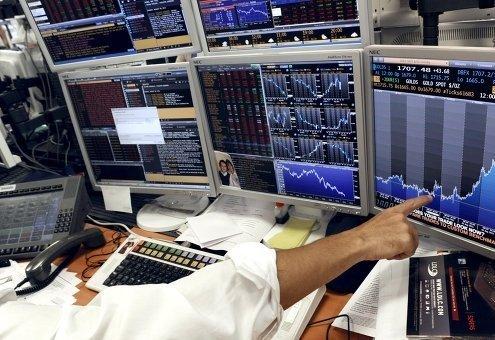
The choice of such products is quite wide - you can make deposits in shares, securities, invest through banks or PAMM accounts. In order for these deposits to generate income, you need to choose an option that will be protected from fraudulent schemes. There are several criteria for choosing an investment product. For example:
- An assessment of the reliability of a company offering you to invest in something. If a company is at the bottom of the rating list, this indicates its low level of reliability and makes you wonder whether it is worth cooperating with it;
- Legislative support for an investment memorandum or prospectus. These documents describe the very essence of the investment product and are mandatory for it. If they are not there, then the investment product is not registered anywhere;
- A subjective, but often fundamental factor is the quality of service. If at the company’s office you were rude, rude, and received at the wrong time, then you will have no desire to cooperate with this organization.
Is it possible to return
The law says nothing about how to return goods of this particular group - it was removed from other lists to emphasize the inability of the seller to provide you with an analogue to “drive” while you lost your product due to a breakdown. Accordingly, the standard rules and terms for returns under the Consumer Protection Law apply here. However, weapons, vehicles, furniture and household appliances cannot be returned under another clause of the same Resolution No. 55, which separates goods into various subcategories.
Thus, products for long-term use cannot be returned if you simply did not like something in the first two weeks . No, this procedure requires clear requirements.
Firstly, the product must have a warranty - everyone has one, and if not defined, then it is two years by law.
Secondly, there must be a flaw in the product. In this case, you can return equipment or weapons even with minor flaws to the store within the first 15 days.
Thirdly, the product must have a very serious defect that requires repair or replacement of the product with a similar one. This includes breakdowns, subsequent repairs under warranty, etc.
Fourthly, as long as the manufacturer’s product warranty is valid, you can demand that the store cover repair costs. This is only true if the examination has established that it is not your fault for the detected malfunction.
Accordingly, you can return goods if they have a defect. Another reason for return may be that the seller/manufacturer’s description does not match the actual characteristics. But this is very difficult to prove.
What actions must the parties take?
The form of the requirement to provide a similar product for the duration of repair or replacement is not defined by law, but it is advisable to submit a separate written statement or indicate the requirement in the application for repair of the product, since if the case is considered in court, disputes often arise about whether such a requirement was made and what are the deadlines for its presentation (see, for example, the Appeal Ruling of the Supreme Court of the Republic of Mari El dated June 4, 2013 in case No. 33-937). Also, the parties can voluntarily draw up a written agreement on the timing of repairs (cannot exceed 45 days). It is mandatory that the seller, at the time of issuing the repaired product, must provide the buyer with a document containing information about the request to eliminate the defect, transfer of the product for elimination, completion of the repair, transfer of the product to the consumer, the defect eliminated and the materials and parts used in the repair (clause 3 Article 20 of the Law).
When considering such cases in court, the consumer has the right to demand payment of a penalty for violating the deadlines for repairs, for violating the deadline for providing goods for the period of repair. If the repair deadlines are violated, the plaintiff also has the right to file a demand for termination of the purchase and sale agreement and the return of the amount paid for the goods, including penalties for violating the deadline for returning the cost of the goods, compensation for moral damages, a fine in the amount of 50% of the awarded amounts for refusal voluntarily satisfy the requirements (see, for example, the Appeal ruling of the Moscow City Court dated January 22, 2014 in case No. 33-1733). According to Article 23 of the Law, the penalty in these cases is 1% of the cost of the goods for each day of delay.
